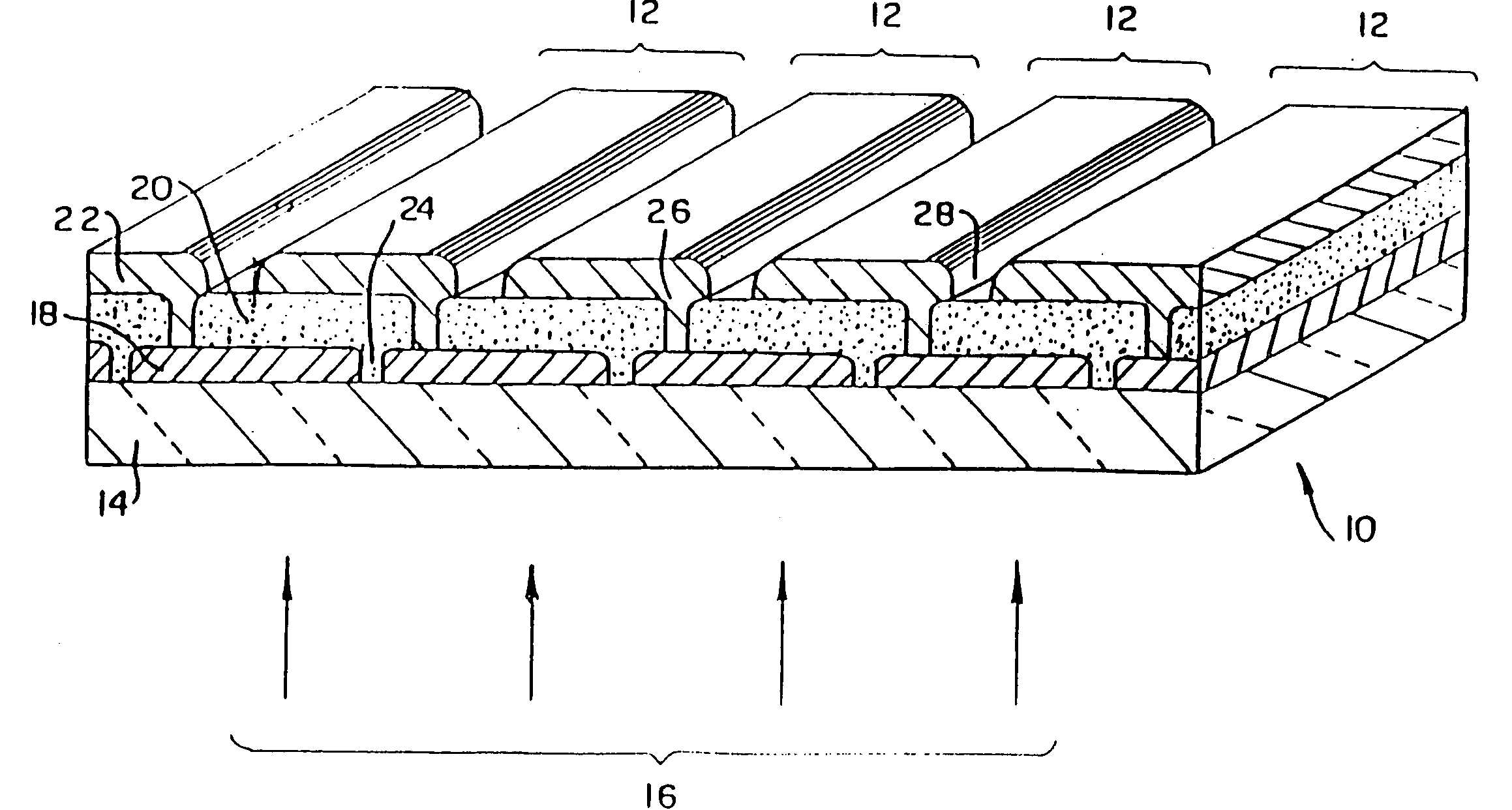Partially transparent photovoltaic modules
a photovoltaic module, partially transparent technology, applied in the direction of manufacturing tools, laser beam welding apparatus, welding/soldering/cutting articles, etc., can solve the problem of cell opaqueness
- Summary
- Abstract
- Description
- Claims
- Application Information
AI Technical Summary
Benefits of technology
Problems solved by technology
Method used
Image
Examples
example 1
[0067] A partially transparent photovoltaic (PV) module with 5% transmission line pattern was made from what was otherwise a thin-film, amorphous silicon BP Solar production PV module (26×48 inches, MV) as follows.
[0068] The apparatus used was a high power Nd:YVO4 laser capable of working at 100 kHz and output about 10 W; an XY scanner with mirrors coated for high power laser applications; a laser focusing lens; a beam expander and two mirrors. The XY scanner was a combination of X and Y axis mirrors each controlled by a galvanometer. The focusing lens was mounted on a micrometer that allowed adjustment of the laser focus accurately. The laser beam from the laser was collimated by the beam expander and then directed to the focusing lens by two mirrors. The focused laser beam was projected to the work surface by the XY scanning mirrors. The galvanometers positioned the beam to the desired location on the PV module. The laser beam was directed from the glass substrate side of the mod...
example 2
[0070] A partially transparent photovoltaic (PV) module with 10% transmission line pattern was laser prepared as follows.
[0071] Same as Example 1, except the scribe line spacing was reduced to about 1 mm.
example 3
[0072] A dynamic focusing unit was used to replace the focusing lens in Example 1. The dynamic focusing ensured the laser focused on the working surface at all times during the laser scanning, leading to more uniform coverage across the PV module.
PUM
| Property | Measurement | Unit |
|---|---|---|
| width | aaaaa | aaaaa |
| width | aaaaa | aaaaa |
| width | aaaaa | aaaaa |
Abstract
Description
Claims
Application Information
 Login to View More
Login to View More - R&D
- Intellectual Property
- Life Sciences
- Materials
- Tech Scout
- Unparalleled Data Quality
- Higher Quality Content
- 60% Fewer Hallucinations
Browse by: Latest US Patents, China's latest patents, Technical Efficacy Thesaurus, Application Domain, Technology Topic, Popular Technical Reports.
© 2025 PatSnap. All rights reserved.Legal|Privacy policy|Modern Slavery Act Transparency Statement|Sitemap|About US| Contact US: help@patsnap.com



